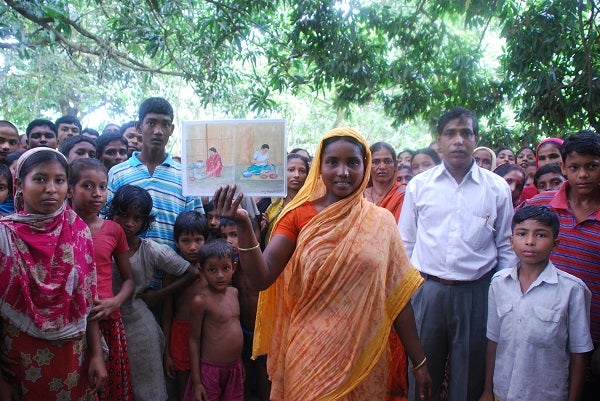Reducing Malnutrition through the Graduation Approach
Half of the under-five deaths worldwide are due to malnutrition. Malnutrition, especially during the first 1,000 days of life, is a major driver of cognitive impairment and susceptibility to infectious diseases among children. The scale and persistence of the problem has made it a top priority of the Millennium Development Goals and the Sustainable Development Goals.
Located in one of the malnutrition “hot-spots,” Bangladesh remains a paradox: Despite the marked improvement in a host of social indicators, such as infectious diseases, primary school enrollment and women empowerment, malnutrition persists among children. Though the country fares better than its neighbors, nearly 39% of children under five in rural Bangladesh are still malnourished.
As researchers interested in a deeper dive on impact, we evaluated the effects of BRAC’s Targeting the Ultra Poor (TUP) program on nutritional outcomes over a four-year period (2007-2011). The results among children under five are promising. TUP employs the Graduation Approach, where participant households receive income-generating assets (typically livestock) and training on business development, nutrition and social development on a biweekly basis for a period of two years.

Using a randomized control trial, we collected data from nearly 8,000 ultra-poor households and 12,500 other-poor households between 2007 and 2011, living in 13 of the poorest Bangladeshi districts. In addition to evaluating the impact of the program on the nutritional status of the program participants, we looked at its spillover effects to non-participant households in the same communities.
The paper evaluates various age groups, but we are encouraged specifically about the results on children under age five. Our study found:
- Among participant households, children below five were 19 percentage points less likely to be underweight than similarly aged children in the control group.
- Among under five children in poor non-participant households in the treated communities, the likelihood of being underweight was reduced by 9 percentage points.
Malnutrition among children is typically driven by poor maternal and childcare practices, shaped through generations of traditional and cultural practices. Evidence suggests significant increase in the duration of exclusive breastfeeding (by 72 days) and vitamin A administration (26 percentage points) for the ultra-poor who participated in the Graduation programs. Through “demonstration effects,” the duration of exclusive breastfeeding among non-participants increased by 59 days while the administration of vitamin A rose by 19 percentage points (see here for an extensive discussion on other avenues of spillover effects).
The results from the study are very important. First, the holistic nature of the program addresses several constraints of the ultra-poor, and the mentoring in particular allows positive behavioral changes. Very interestingly, non-participants seem to be learning from the mentoring, too, ultimately leading to the spillover effects. These long-term nutrition benefits, especially in children combined with the positive spillover effects within the community means the cost-benefit ratio may be much higher than we thought.




Add new comment